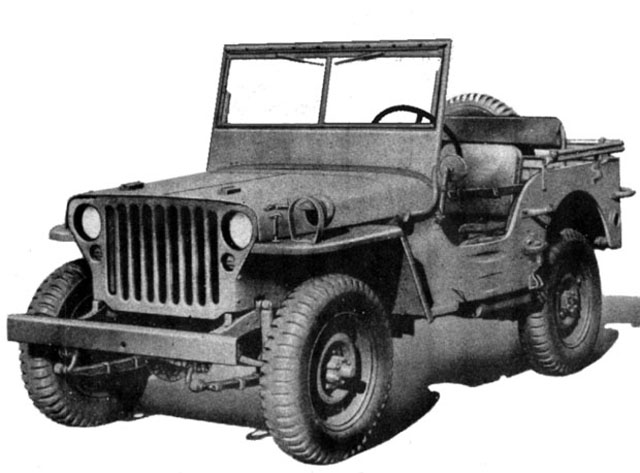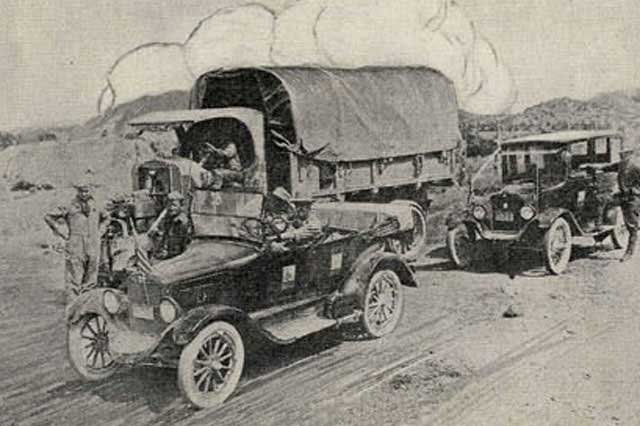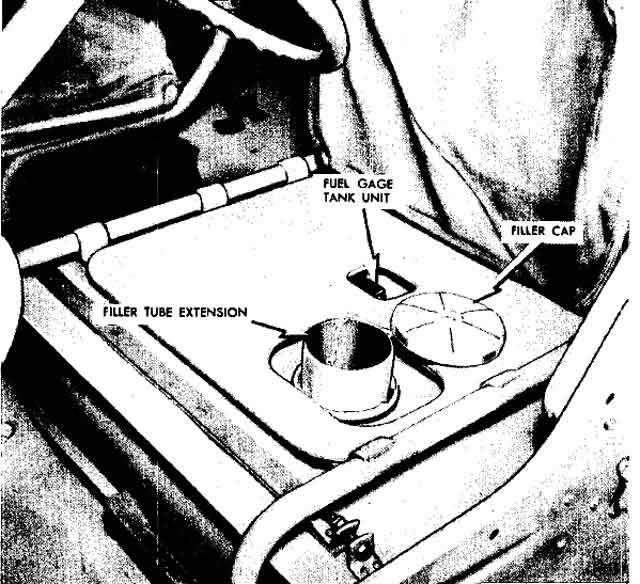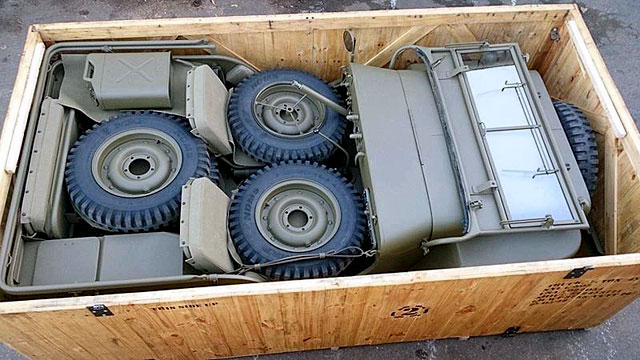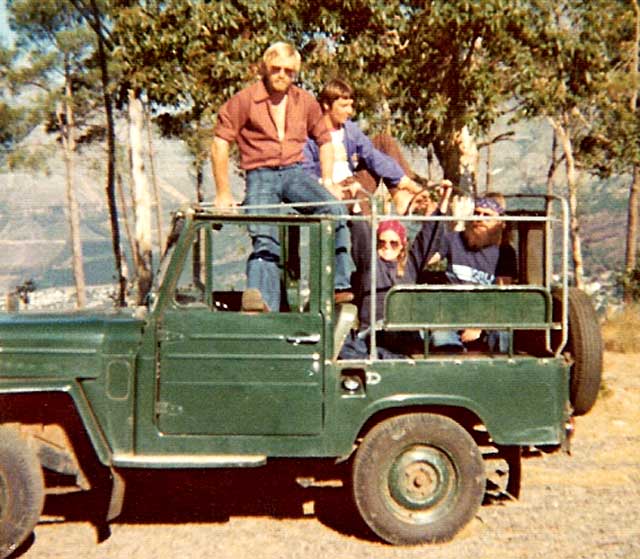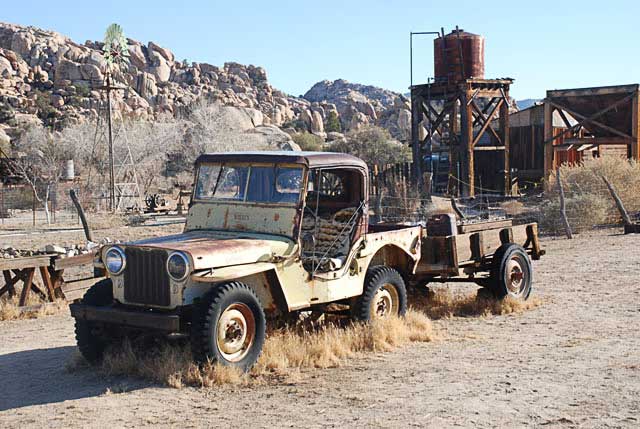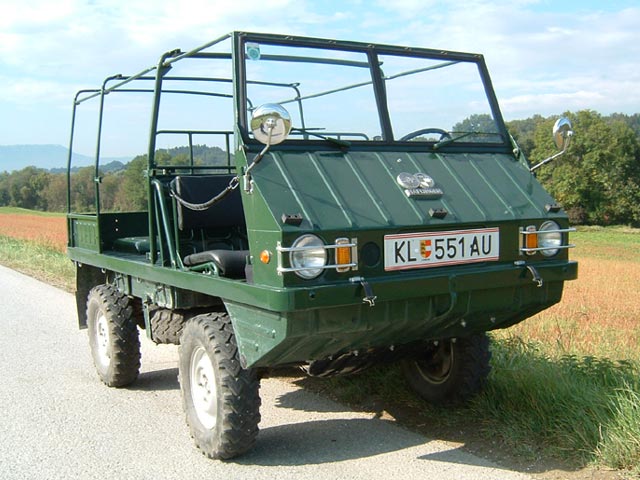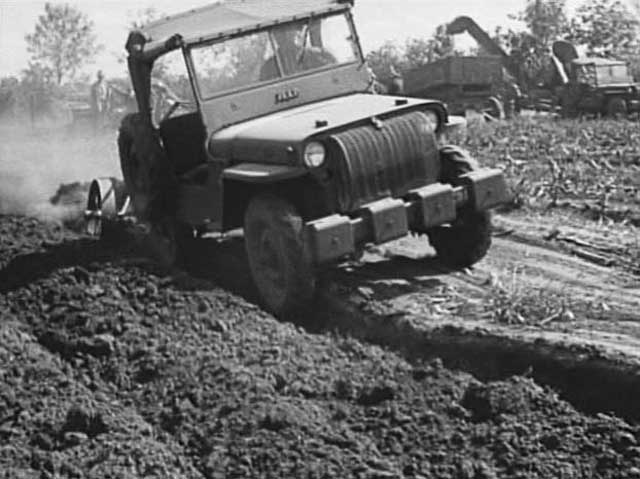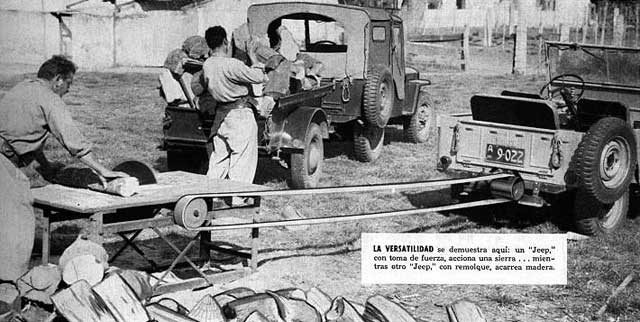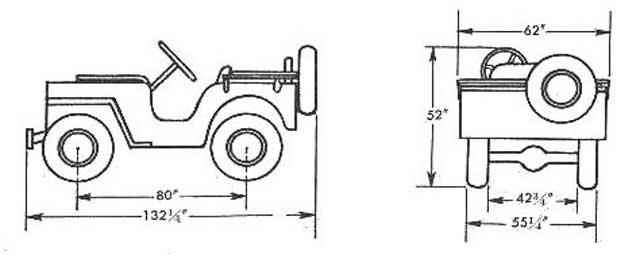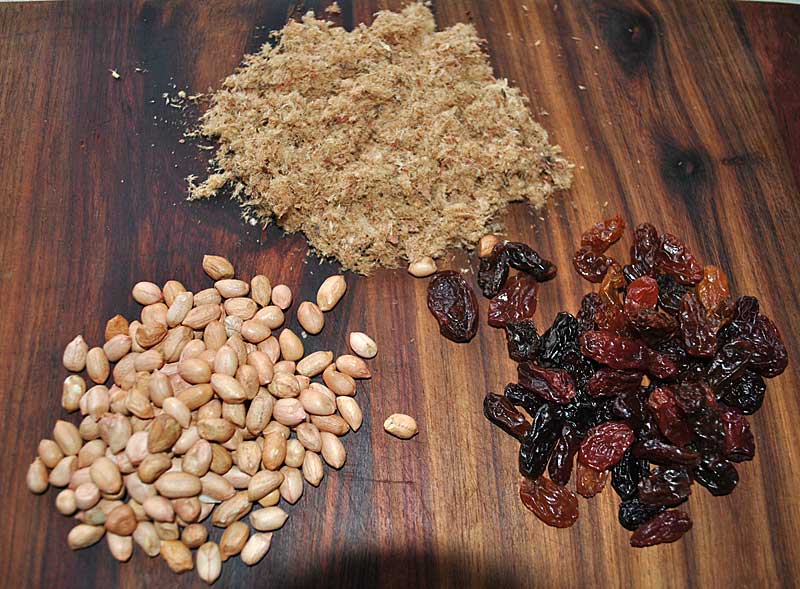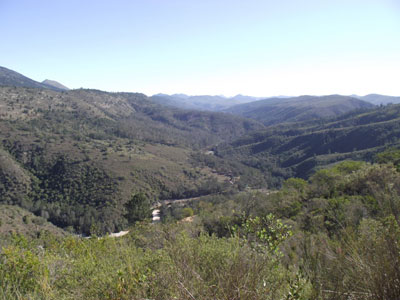Jeep: The Ultimate Man’s 4×4
Jeep: As Known By Real Men and Explorers
Here are some stats and experiences with Jeep. You didn’t think I was going to write about luxury, air-con 4×4 travel, did you? Ok, good. When we say Jeep, we mean real ‘can-do’ bundu bashing Jeep, as in the ¼ ton truck, like as in CJ2A for example. The all ages Jeep, the kind you could see Noah using to round up the animals:) For all of you, who want something soft, use 4 ply toilet paper. The CJ after the Jeep name, stands for ‘civilian jeep’ and the numbers are sequential for the model types i.e. CJ2 – CJ5 etc. and does not designate any particular year model, but rather, designates the style model.
Boring, it’s been done before! That’s true, it’s been done before, but I think this is a little different. We all know that Jeep was invented by John N Willys. But do you really know why and how it got its name, Jeep? We all know the answer to that? No, it wasn’t from the wartime GP (general purpose vehicle) to Jeep story. It was, in fact, fixed in the minds of all readers before America went to WWII. And that by an article with a photo by Katherine Hillyer, which appeared in the Washington Daily News on 20 February 1941, when the Jeep was photographed going up the steps of Capitol Hill in Washington, DC.
The article came about thanks to “Red” Hausmann, Willys test driver, there to do an advertorial for the Jeep. He told Katherine it was a Jeep when she asked him the vehicles’ name. Hausmann got it from military staff during the Willys military testing days of 1940, it was referred to as a “jeep,” the testing name for all experimental and unproven military items. Hausmann adopted it that day for the press and the public has never known otherwise. So it got posted all over the US and other English speaking countries around the world after the Washington Daily News published the story. Ok, if you like, keep your version. But I can tell you this and that is, Jeep had its name before it went to war. Fact! The Mexicans called it Chiquita, meaning ‘little.’
There are two vehicles, I can’t ever remember being without, that’s a grey “Vaaljapie” Ferguson tractor and an army olive-matte, coloured Willy’s Jeep. That was because they were there when I was born. If they weren’t already there, I think I might have been traded in exchange. Here I must tell you, this family is mad about anything 4×4, off road scramblers and in particular the ‘can-do’ Jeep. Ja, well, no, man, the bike must win! As long as you don’t have biltong to fetch.
First, I learnt to drive the Ferguson. Years later at the age of twelve, when I was considered ‘expert enough’, the Jeep was my baby, to use for errands around the farm.
My first big mistake came when making an airstrip at our bushveld farm in Timbavati. It went something like this; I was told to drag a clump of thorn trees up and down the new runway to level the ground and plant the grass seeds that were already sown. I was going merrily along doing a great job – I thought – when suddenly, I was overtaken by a fast-moving Jeep J2000 Gladiator pickup bakkie and stopped! And then it erupted, going something like this. With a few choice words and suggestions. Well… sort of.
“What the @!#%$ and more are you doing? I could have taken any average baboon down from the mountains to drive this ‘thing’. It takes a civilized human being to drive it properly by reading the gauges.”
Fascinating, from the way I was facing, I could see the Blue Drakensburg Mountains being pointed out to me, ‘baboon’ country; all the while gauges were being tapped vigorously with a determined index finger.
“See here, look at the @!#%$ gauges, that’s skill, not driving like a monkey! Any monkey can drive, but this is a sophisticated piece of equipment.”
A Jeep, nog al was sophisticated even then – not a ‘thing’.
I climbed out – with no door to slam, ‘accidentally’ that is – and was excitedly helped along to the front of the bonnet, which in fact was steaming. Well, I could have seen that without looking at the gauges – if my goggles weren’t so full of sand. See what I mean? Anyway, the ‘thing,’ was a left-hand drive, all the gauges are on the other side:) It was a hot day, around 4oºC (in the 100ºF) in the shade and we (Jeep and I) were in the sun. All that was needed for this ‘can-do-all-things’ Jeep, was a top-up. This ‘thing’ was actually being overworked, as a stand-in tractor, with a load too large and a job too hard. Management should have known that. That’s bad management. And I was only 14 years old.
To know the Jeep ‘thing,’ you either have to have owned one or have driven it regularly. I would never knock a Jeep owner who owns a new flash SUV for example. But if you never got there climbing up the ladder from a ¼ ton, real Jeep then you don’t know the ultimate 4×4. And you don’t know what you’re missing. Hand brake turns, popping wheelies up the hills, sliding down muddy slopes and the like. Best way to learn to drive (but read the gauges).
‘Our Jeep,’ as I always liked to call it, was an MB or early CJ, of the 1945 vintage. Where my grandfather got this Jeep, I haven’t a clue and my father somehow appropriated it from him (happy me).
No fuel filler in the side of the body, here the fuel tank was under the driver’s (left) seat. Note the fuel tank image and you will see the filler tube extension. This pulls up fairly high and tilts outwards for ease of filling. As you can see, the gauge is on the tank, also under the seat. The tank was put under the seat for wartime, to keep it safer from enemy rifle fire:) Maybe it was a case of first shoot the driver then the tank, giving the Jeep a second chance to live. Go figure (toe pick).
That’s how they rocked up, looking more like a toy than the real thing. Not many were crated. It was too costly and unnecessary, so they were mostly flat-packed tightly against each other. I never noticed until now that the steering wheel was the same size as the outer wheel rim – see image of the left wheel rim. Wouldn’t you like to get your hands on one of these today? The vacuum windshield wipers were operated by hand, using the levers supplied. You can’t see from this photo, but smaller crates with the operator/owners manual, service logbook, spares and tools, like spanners/wrenches, wheel nuts, axe and shovel were packed under the body.
During WWII, Willys built 363,000 Jeeps and Ford built 280,000, which was a production rate of one new Jeep every 90 seconds. Ok, Willys you know, but what has Ford got to do with Jeep? Actually, a lot, as you can see from the above figures.
The Willys was called Willys MB (military B model) and the Ford GPW (government passenger Willys), as a nod to Willys who gave them the contract. They were identical except for the cross member under the radiator. Willys made the crossbar on a round, curved tube, whereas Ford made it on an inverted channel iron. This is where the steering was attached. Hard to see from outside the vehicle, unless you know what to look for and only on the early models, can you see the difference. For collectors, these points are vital to date the vehicle. Any later changes to fool the public are also something to look out for. Willys never adopted the Ford method of construction, using the curved tube throughout its manufacturing years.
So many people, or should I say manufacturers from India to all the world like Toyota, Land Rover and Suzuki, copied the MB-CJ2 up to the CJ5 styles that were made from 1941 to 69. Yet, the only makers given license to manufacture Jeeps under contract, were Mitsubishi of Japan and Mahindra of India. This took place from the days of the CJ3, in the 1950s to this day. Land Rover was styled after the wartime Jeep by Maurice Wilks in 1947.
As I mentioned above, one of the copies of Jeep was made by Mitsubishi, the great Japanese shipbuilders. In the early ’50s, Mitsubishi assembled around 500 CJ3 Jeeps for their police (security forces) and forestry. Japan at the time, was not allowed to have actual police or any military forces, under the international peace treaty, until the 1954 Self-Defence Forces Act. Japan then started building Jeeps for export and home use under licence from Willy’s until 1998.
One day, I was introduced to one from the ’70s. I liked the look of this Jeep – which was never exported to South Africa – and after a test drive, sold it to myself. I bought this (left-hand drive) Mitsubishi J54 (diesel) Jeep from some refugees who came down from Angola to escape the war there. I say left-hand drive, because all Japanese vehicles are right-hand drive, – which suits the Japanese about South Africa being right hand drive – unless made for export to the Americas, etc.
The photo was taken in 1976 on Signal Hill, Cape Town, a short while after arriving from the Eastern Transvaal (Mpumalanga). We returned via the Garden Route and Mkuzi Game Reserve, back to home. We had fantastic fun and dependability with this Jeep over the years. Reliability was paramount because all the parts had to be specially imported. This little vehicle definitely over-delivered on its name and make.
I built CJ2A Jeeps as a hobby, but only CJ2 or CJ2A’s. So I knew a lot of Jeep enthusiasts and collectors. When you build a CJ, you break down to parts only – everywhere, even the shackles – so destruction to reconstruction comes closer to the truth.
One fine day, (no roof) a fellow Jeeper took me for a drive in his newly converted CJ2 V8 Jeep – obviously, a modification – I, of course, believe in originality with the early Jeeps. Sharing your achievements with a fellow Jeeper is a common thing, like, ‘come with me on my first drive.’ This Jeep was fitted with the small-block, Chevy 289 V8 engine imported from the US. The ‘thing’ was seriously quick, light for robot to robot (traffic light to traffic light), fast pull-off and fast braking.
The engine fitted in beautifully, although there was a small conversion to the Jeep’s body, as in a cut-away of the firewall to make space for the distributor. It was what I call a soft conversion because you couldn’t see the alteration easily and it didn’t compromise the body too much. On the Durban N3 highway at 80 mph (150 kph), the front-end started to lift off, resulting in no steering! The cause, we think, were the scoops formed by the front mudguards and the lighter engine. The wind was kind to us that day, keeping us on the straight and narrow. A miracle, until my driver slacked off, landing the front end to resume steering and regaining control. An instant lesson well-learned and our lives spared. That’s one where speed can kill, or re-adjust your thinking somewhat.
The CJ2A Jeep, by the way, can incline 45º up or down hills and a roll, side-to-side of 50º before it topples over. Aye thaaat’s reeelly grrund, as my Scottish tutor always said. The only other 4×4 I knew to compare in performance, was at Giant’s Castle, Natal – 60 miles (100 km) from the Maluti Mountains and not far from the Sani Pass, about 24 miles (40 km). It was an Austrian built, Haflinger from the firm Steyr-Daimler-Puch (Puch also made motor bikes). This ‘thing’ in the hands of an experienced driver was scary when put through its paces, especially at around 11,000 feet (3,200 meters) in the snow at the top of the Drakensberg Mountains, which for this ‘thing’ was a highway. The incline and role capabilities of this vehicle, unfortunately, puts Jeep to shame. It’s beyond most people’s tolerance level to undergo as a passenger, when this ‘thing’ is taken through its paces in the hands of a professional driver.
After the war, Jeep tried to go commercial in a big way, with the AgriJeep. Demos were held all over the States, but it failed even with huge press behind them. The project was dropped and the photos above and below are of CJ1 and CJ2 Jeeps, not AgriJeeps. Jeep tried to do what Mercedes eventually got right to a limited degree. This was done with the Mercedes Unimog (also a left-hand drive) many times larger and heavier than the Jeep. I converted one into a bush vehicle, years ago and painted it with zebra stripes from nose to tail – nicely done – remember I’m an artist;-) I was very fond of this 4×4 for its many uses, but the Jeep still steals my heart. If you choose a single run-around vehicle to use, taking in all parameters, Jeep – rugged Jeep style – makes the best all-round bush vehicles there are. CJ2 Jeep betters the use of any quad-bike in my opinion when you take into account its PTO and towing capabilities.
Jeep, how it breaks down:
CJ, CiviJeep or civilian jeep, ’45-’86, Large round headlights.
CJ-2, “Agrijeep”, flat fender, low hood CJ’s with L-134 engines and never flew.
CJ-2A, 214,760 produced, ’45-’49, flat fender, low hood, “Willys” embossed on the plate below the two piece windshield.
CJ-3A, 132,000 produced, ’46-’53, flat fender, low hood with one-piece windshield design and a vent just below it.
CJ-3B, 155,000 produced, ’52-’68, flat front fender, high profile hood with F-134 engine.
CJ-5, 611,000 produced, ’54-’83, the first V-8 short-wheelbase utility vehicle.
CJ-5A, based on the M38A1 design.
CJ-6, 50,000 produced, ’55-’81, 20 inches added to the wheelbase of the CJ5.
CJ-6A, based on the M38A1 design.
CJ-7, 379,000 produced, ’76-’86, extra wheelbase allowed for a wider variety of drivetrain modifications.
CJ-8, 28,000 produced, ’81-’86, “Scrambler” – 103-inch wheelbase pickup, with lots of rear overhang.
Video run time: 9:04

